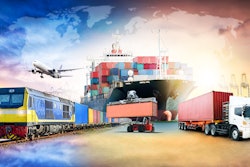
For supply chain leaders, it isn’t a stretch to say it has been a street fight over the last 30 months to execute steadily on cost, quality and delivery – the three pillars of any top-performing supply chain. And the challenges continue, which makes it more critical to make sure your company’s supply chain is as shockproof as possible. The goal: Seeing your enterprise through immediate needs as well as mid-term and longer-term growth.
That means thinking both strategically and tactically to understand where you are now and where you want to go. It encompasses everything from the relationships with partners, the knowledge about your manufacturing sites and how what you do relates to larger environmental and social goals. In looking at the long term, five years from now, the strategy put into place should not only be able to support your company’s projected growth but also ensure that risk mitigation tactics are built in.
Here’s how to begin thinking about it, especially in a fast-growth company.
Any 12-month plan is by its nature very tactical with some strategic activities in play. The 12- to 36-month view should become “stra-tactical” – tactical but with a strategy for crossing the chasm in terms of developing more mature processes. Then, 3-5 years out is more visionary around where you want to be with foundational tenants in place – consider the must-haves vs. nice-to-haves. Here’s some key elements for building a shockproof strategy.
Supply chain collaboration (aka the relationship factor)
Developing strong relationships with both upstream and downstream partners and with customers is critical. With suppliers, active listening on a regular basis helps facilitate communication and collaboration. Talking to supply chain peers among your customers, meanwhile, can help them understand what you are going through and help you understand what their needs and desires are, what their concerns are and what information they need to be able to quell anxiety from their own teams. A side benefit for the sales side of the house: Having this level of visibility can improve your company’s ability to be responsive to customers’ product and service needs.
The “factory rat” mindset
There’s nothing like getting down on a factory floor and watching things happen. It’s a great way to look for opportunities for optimization because you can see things that others miss. It can be as simple as asking somebody on-site, “why does this product go from here to there and back again? Why not keep it in one place.” Identifying small efficiencies can really add up.
Balance the tactical with the visionary
Even factoring in anomalies like the pandemic’s urgent need to focus on the tactical, any mature supply chain strategy requires a healthy balance of both the tactical and the visionary. Day to day, you must continue to sharpen performance measurement and management techniques. At the same time, it's incumbent upon the leadership team to shape and define the direction you’re heading and the measures of success for when you get there. Here’s an analogy: You might be able to drive a car really fast, but if you don't know where you’re going, that’s irrelevant.
Over-index on mitigating and managing risk
Scenario planning – reflecting on “if X happens, how are we going to respond” is an invaluable exercise that can build muscle for dealing with the unexpected. Creating a business continuity or disaster recovery plan and thinking it’s one and done is not a good practice. You must keep it recent. To maximize its effectiveness, view it as a living document: If there is a tsunami somewhere, taking an outdated document out of the drawer won’t do you a lot of good.
Commit to reducing environmental impact
Prioritizing environmental and social aspects of the supply chain strategy can go a long way in helping your organization meet and uphold its commitments, by ensuring the ethical treatment of workers, for example. It is also good for the bottom line. Nearshoring strategies help keep supply closer to demand. That carries benefits for minimizing disruptions, reducing logistics associated with moving product and reducing carbon footprint/environmental impact. This shortening of the supply chain can also be a catalyst for driving product packaging redesigns to promote recycling and reuse.
The pandemic has forced all to get a sustained view of the impact of stretched lead times for products and last-minute cancellations from suppliers. The ability to meet customer demands has never been more complex. Creating and maintaining a shockproof supply chain strategy can put your company in a position of strength for meeting any new headwinds.



















